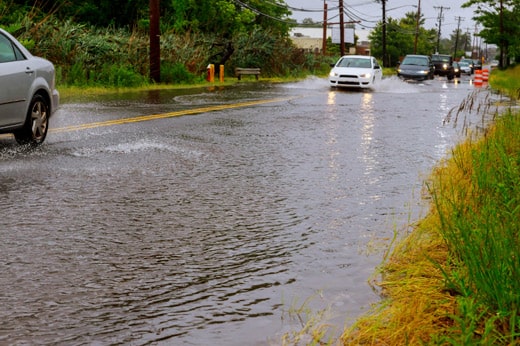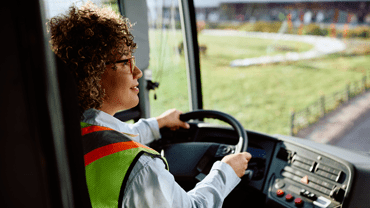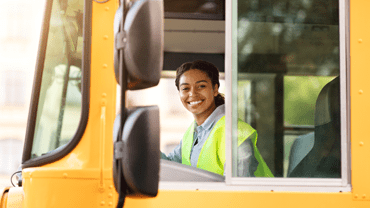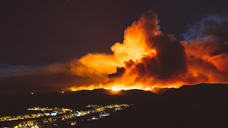 Blog
Blog
Time for an Earthquake Preparation Shakedown
- The Great California Shakeout is October 21st
- The annual Great California Shakeout was started to raise awareness and to help keep our communities ready for the day another quake suddenly disrupts our lives
- The web site for the Great California Shakeout provides a wealth of information on the ways individuals, families, local agencies, schools, health facilities and businesses can participate
The third Thursday of October each year is observed as the Great California Shakeout – an opportunity to take stock of preparations for the next earthquake and to practice safety measures when the ground starts shaking. This year, that date is October 21, and we encourage you to take part in your workplaces and with your families to get ready.
It’s not a question of if, but when the next significant quake will strike California. Each year, hundreds of earthquakes happen in our seismically active state. Most of them aren’t even noticeable unless you happen to be looking at a swaying ceiling lamp at that moment. But in the relatively recent past, large California metropolitan areas have experienced major earthquakes: Los Angeles in 1971, 1987 and 1994; and in the Bay Area in 1989. On July 8, 2021, a magnitude 6.0 earthquake occurred in Antelope Valley. As these dates recede into the past, our recollection of the impact of a destructive temblor fades and the population becomes complacent. Yet the longer the interval between these events, the likelihood of another destructive earthquake increases.
The annual Great California Shakeout was started to raise awareness and to help keep our communities ready for the day another quake suddenly disrupts our lives. How do you use this opportunity to get ready? The web site for the Great California Shakeout provides a wealth of information on the ways individuals, families, local agencies, schools, health facilities and businesses can participate. The more of us that take part, the better our chances of mounting a resilient response to these difficult to anticipate disasters. Below are some of the most critical preparations all of us should be taking.
Immediate Reaction to Shaking
Protecting yourself quickly when an earthquake starts can help you avoid a serious injury. The sudden acceleration can knock you off your feet and expose you to flying or falling objects. At the first indication of an earthquake, Drop, Cover and Hold On! As best you can, get down on the floor, get under a sturdy table or desk and hold on to minimize chances of being struck by something that can injure you. Since you never know where or when it will happen, the Federal Emergency Management Administration (FEMA) created a poster to illustrate how to protect yourself in a variety of situations.
As part of your Great California Shakeout, take the time to practice these steps in the first crucial seconds during an earthquake. You can have a Drop, Cover and Hold On drill by yourself or in a group. Doing the drill will help you to be safer when you really need it.
Have a Plan to be Safe
Advance planning is the key to staying safe and reducing the hardships in the aftermath of an earthquake. Assess the risks you could face. How vulnerable are the buildings you live and work in, and what steps can be taken to make them safer? Is furniture properly secured and how are heavy objects stored? Do you know where and how to turn off utilities to prevent secondary hazards?
Consider the supplies you will need. Emergency water, food and first aid supplies, along with flashlights, shoes and gloves as personal protective equipment. Provision for a minimum of 2-3 days for each person if sheltering in place is necessary.
Communication Capabilities
Having public safety information will help you to navigate a recovery from a major earthquake. A portable radio (powered by battery, solar or hand-cranked generator) is important for you to be informed of the situation in and around your community, the availability of emergency help and other resources, and advice from public safety agencies.
Communicating out from your location can be a challenge if local infrastructure is severely damaged. Our smartphones may not function as we expect them. In any significant disaster, the best practice is “Text First, Talk Second.” A cell phone conversation can take up to 800 times more bandwidth than a short text message. Texting instead of calling helps keep essential communications available for emergency services.
Recovery and Resilience
After addressing immediate safety issues, a speedy recovery will also depend on good preparation before an earthquake happens. Keep copies of important documentation, including health plan ID cards, insurance and claims filing information where you can easily access them after a disaster. Photos you take of your home or other facilities you are responsible for, before an earthquake, can help with substantiating losses and getting a claim handled expediently. Be sure you have contact information for your insurance agent, broker and claims department for your insurer.
Are You Ready for the Next Big One?
Earthquakes that interrupt our lives don’t happen every day. But it’s important we remember that an earthquake can happen any day. Participating in the Great California Shakeout is one way to make sure you know what to do before, during and after a major earthquake. Then take the steps you need to stay safer and be prepared for the day that will eventually come.
About Bill Clayton
Bill Clayton joined the AP Keenan Loss Control team after 27 years in public service. Bill began his career in the U.S. Navy and served in combat in Vietnam and later served in Guam as a police officer, field supervisor, and U.S. Customs Inspector for the Joint Armed Forces Police Detachment. He’s had real-life experience as a first responder and emergency manager. His assignments included environmental safety officer and emergency manager, and nine years as the safety and loss control manager for a large school and community college risk management JPA.
Bill has a Bachelor of Arts degree in Business Administration, a Master of Science degree in Emergency Services Administration, is a Certified School Risk Manager (CSRM), and an Associate in Risk Management with a Public Entities (ARM-P) designation. Additionally, he’s earned the Crime Prevention Through Environmental Design (CPTED) Professional Designation (CPD). His extensive Federal (FEMA & Homeland Security) and California State training and experience in risk and emergency management, makes him a subject-matter leader on the IMReady suite of services provided for public entity clients to help them in preparing for unexpected critical incidents and events.
Subscribe
Subscribe to the Keenan Blog




